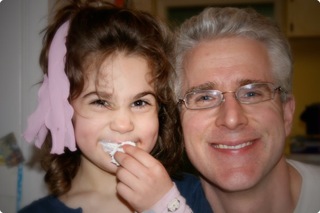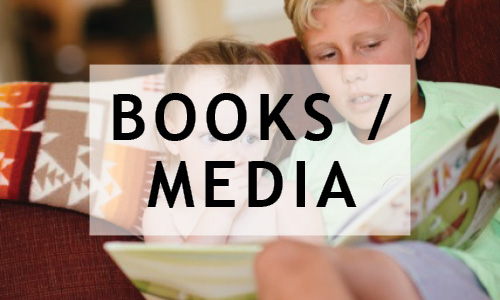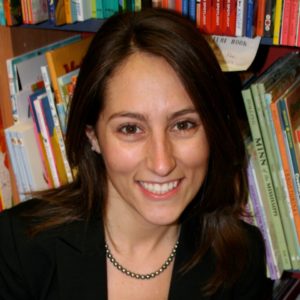 I have really enjoyed reviewing and using Kyle Tomson’s apps for children with special needs and was interested in the man behind these terrific apps so decided to let you in on our interview:
I have really enjoyed reviewing and using Kyle Tomson’s apps for children with special needs and was interested in the man behind these terrific apps so decided to let you in on our interview:
How did you get into developing apps for kids with special needs?
I started creating my first app, SentenceBuilder, for my daughter Caitlyn. Caitlyn has a serious language disorder, and back in 2009 my wife and I were desperately trying to find some speech and language apps to help supplement her speech therapy. After a fruitless search, I decided to create one myself, and the idea for SentenceBuilder was born. An interesting side note is that I didn’t intend to sell SentenceBuilder at first, it was customized specifically for Caitlyn. After she had been playing it for 3 months, I entered into a wager with a friend of mine as to who could get onto iTunes first. The rest is history.
How do you determine what you will develop next?
Again, my daughter has been my inspiration all along. I designed SentenceBuilder because she was struggling to put together grammatically correct sentences. Then I created QuestionBuilder because she wouldn’t answer questions in the classroom, she only repeated the questions back to her teacher. Then I created StoryBuilder because she was struggling with how to write simple stories. One of my last apps was TenseBuilder, which I created because she struggled (and still does) with tense. All the new projects I’m working on are related to reading comprehension, which is the most pressing issue at the moment.
Who gives you input?
My wife has been a source of many great ideas along the way. I also work with a team of SLP’s during the development process. This has worked out extremely well as they get to test out the apps with their students for 4-6 months before they are released. This helps me flush out any bugs but it also I receive feedback as to new features that should be incorporated. As a for instance, many of the settings options in TenseBuilder were a direct result of my SLP team.
What are some of the surprising uses for your apps that professionals have shared with you?
I think the most unexpected use came from an educator in Australia. Back a few years ago, there were a series of terrible wildfires throughout Australia. Many kids not only lost their homes, but their entire families. Although these kids were not on the spectrum, their lives had been so turned upside down that they exhibited many of the traits of autistic children. Many became completely non-verbal. The educator wrote me to tell me that they had been successfully using StoryBuilder to help bring these kids out of their shells and start communicating again. It was the only tool they found that had any success with many of the orphans. It is a source of great pride that something I created could help kids on the other side of the world in such a profound way.
What do you enjoy most about what you are doing?
There are two things I enjoy most. The creating part is something I get a lot of enjoyment from. I put a lot of effort into identifying the core of any language problem I’m trying solve. The eureka moment when I’ve found a new way to teach something is very satisfying.
The other thing I enjoy is the feedback. I’ve lost track of the number of emails I’ve received from people telling me how my apps have helped their students or children. Many of the stories are heart warming. Knowing that I have created something for my own daughter that has helped so many people is very humbling.
What is your most popular app?
It is a pretty close race. StoryBuilder and SentenceBuilder jockey back and forth between being the most popular, but RainbowSentences is very close behind.
What’s coming up next in your lineup?
I’m actually coming out with an entirely new class of app. Nothing quite like it exists on iTunes. This summer we will be releasing the first 5 titles of our Crack The Books series of interactive textbooks. These books have been under development for the last year and have been developed in collaboration with top universities, scientists and educators from all over the country. They were designed to align with all the appropriate academic standards as well as core curriculum.
Crack The Books incorporates adaptable reading levels from the 1st to 8th grade, allowing teachers to adjust the reading level to each student without sacrificing curriculum content. There are also chapter and final tests incorporated into the apps that are also adaptable from the 1st to 8th grade, allowing schools to choose what grade they want to teach the subject. Common IEP accommodations such as text to speech, visual re-enforcement’s and answer dictation can be turned on/off as well.
The real magic in these apps is in the content. They include the photos and video’s that everyone has come to expect, but also 3D interactive maps, custom animations, interactive games that allow the student to change inputs and watch the effect on a biome, interactive glossary’s, exploring games and more.
By tying all of these multi-sensory features to the text, students gain a richer understanding of the curriculum. The adaptable reading levels enable special ed, regular ed and gifted students alike to experience the same subject matter, but in a way that engages and challenges each of them.
We have been beta testing these with kids that range from special needs to very gifted and all of them love the books. We are excited to release them in the next month or so.



